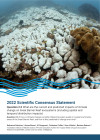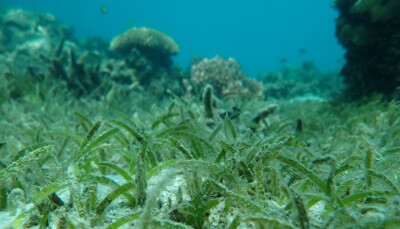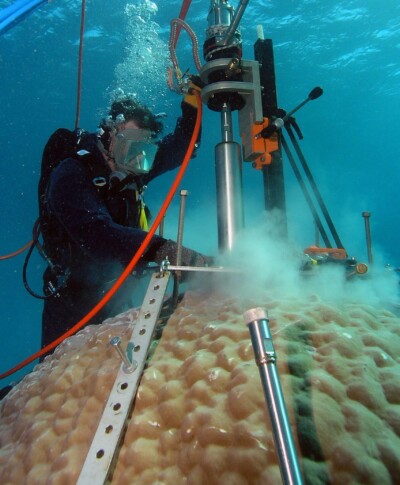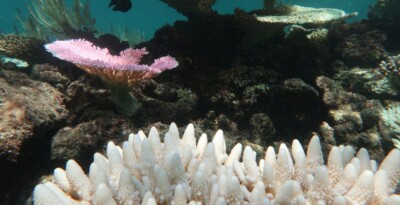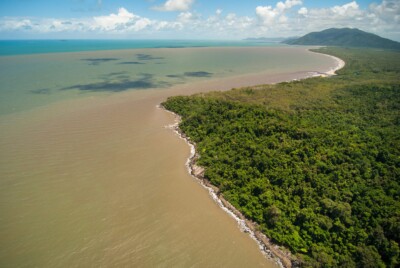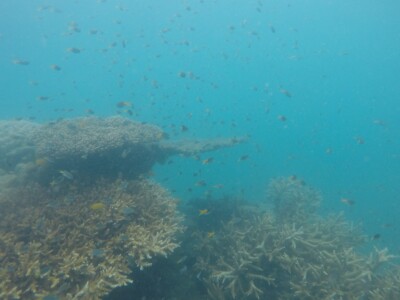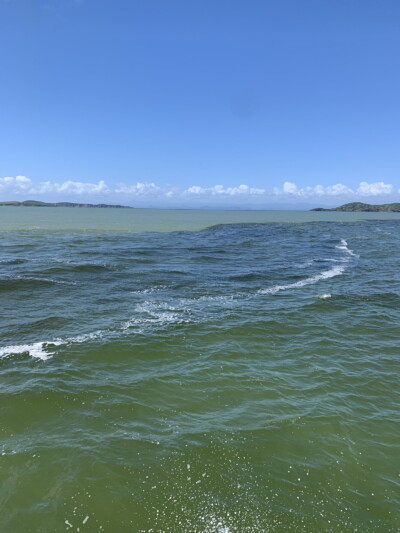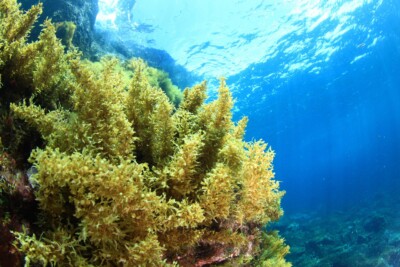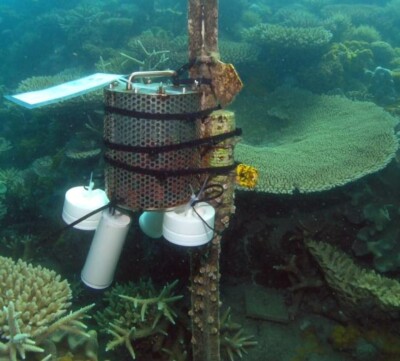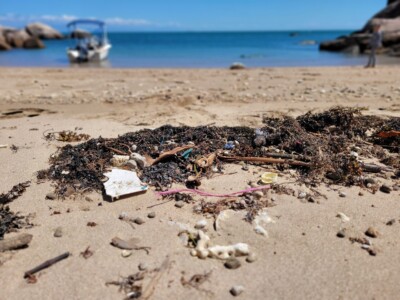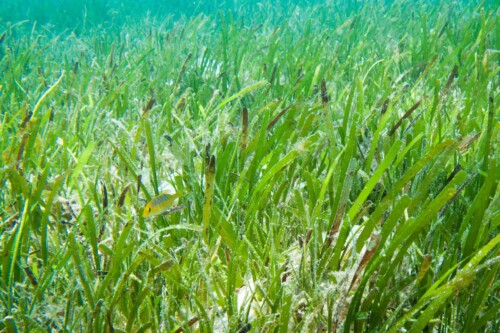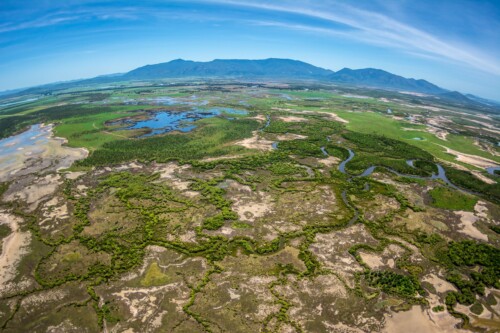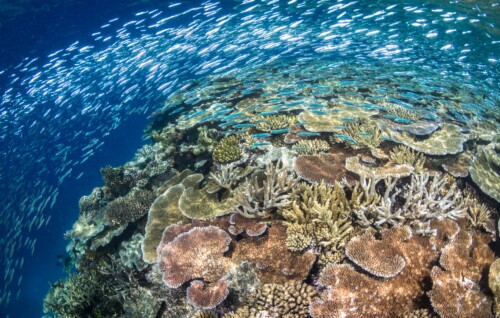Values, condition and drivers of health of the Great Barrier Reef

What are the current and predicted impacts of climate change on Great Barrier Reef ecosystems (including spatial and temporal distribution of impacts)? [Q2.2]
How is climate change currently influencing water quality in coastal and marine areas of the Great Barrier Reef, and how is this predicted to change over time? [Q2.2.1]
Authors: Katharina Fabricius1, Aimee Brown2, Al Songcuan2, Catherine Collier3, Sven Uthicke1, Barbara Robson1,4
Affiliations: 1Australian Institute of Marine Science, 2Private Consultant, 3Centre for Tropical Water & Aquatic Ecosystem Research (TropWATER), James Cook University, 4AIMS@JCU
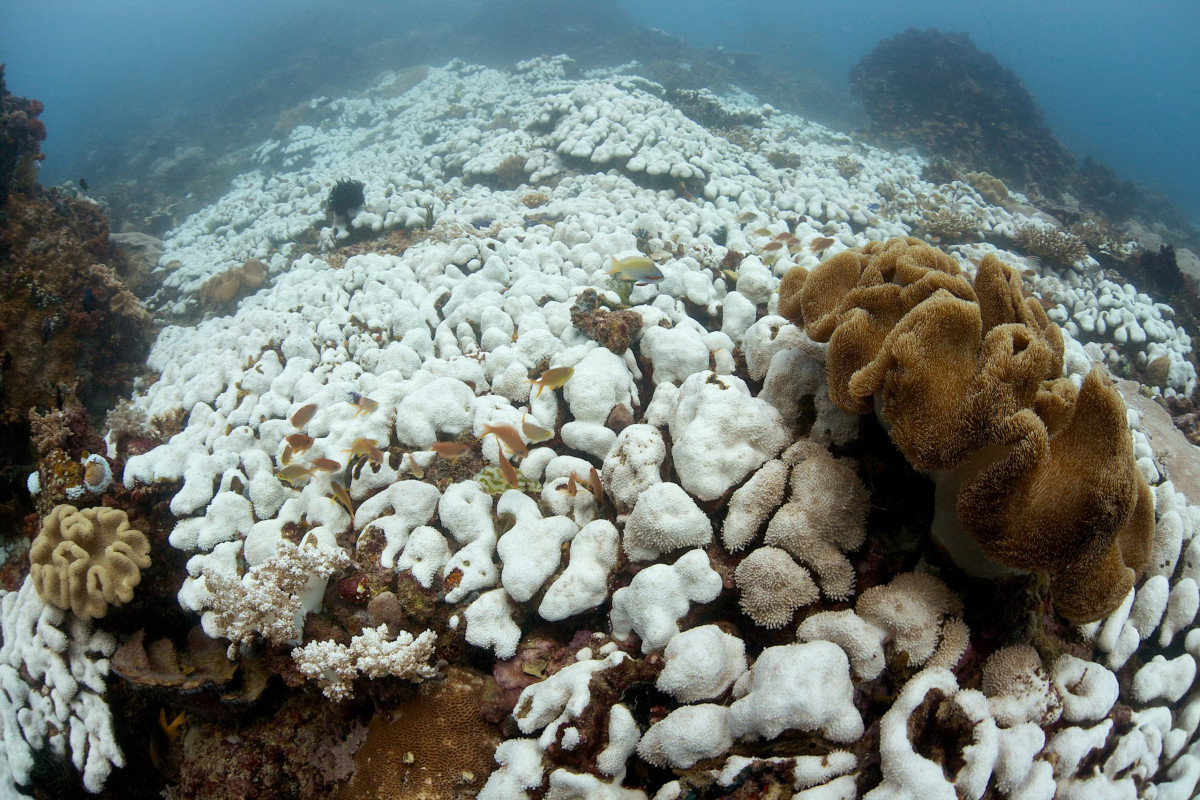
Evidence Statement
The summary of the evidence for Question 2.2 and 2.2.1 was based on 317 studies, primarily undertaken in the Great Barrier Reef and published between 1990 and 2022. The synthesis includes a High diversity of study types (37% observational, 32% experimental, 22% modelled and 9% reviews), and has a High confidence rating (based on High consistency and High overall relevance of studies).
Summary of findings relevant to policy or management action
Studies over the last three decades confirm that the climate of the Great Barrier Reef is changing rapidly and in multiple ways, with some changes already significantly impacting Great Barrier Reef ecosystems and selected organisms. These studies also clearly show that impacts are predicted to intensify rapidly throughout this century, with severity depending on CO2 emissions pathways. Climate change is now widely accepted as the most significant threat to the long-term outlook of Great Barrier Reef coral reef ecosystems. The main climate change agents known to affect coastal and marine ecosystems include warming temperatures, increasing frequencies of marine heatwaves, increasing ocean acidification, extreme rainfall events, changes to the frequency and intensity of droughts and drought-breaking floods, sea level rise, and a potential reduction in the frequency but increasing intensity of tropical cyclones. Of great concern is the prediction that conditions that lead to heat-induced coral bleaching will become almost annual by 2040, depleting sensitive species and severely threatening the ecosystem integrity of coral reefs. By 2030, the evidence consistently indicates that some reefs will already start experiencing a seawater carbonate saturation state below ecologically critical levels, diminishing reef accretion and reef recovery rates. The strong link between rainfall extremes and terrestrial runoff of pollutants into the Great Barrier Reef show that climate change is already impacting Great Barrier Reef water quality, and these impacts will continue to intensify. The evidence also demonstrates the cumulative impacts from climate change and water quality, with the latter adversely affecting recovery times and community composition as climate disturbances are becoming more frequent and intense. The evidence confirms the urgency of meeting all Great Barrier Reef ecologically relevant water quality targets within the next decade before climate impacts exceed the capacity for reef ecosystems to persist.
Supporting points
- Studies verify that periods of extreme sea surface temperatures (exceeding the long-term maximum summer monthly means by six or more ‘degree heating weeks’ i.e., the product of temperature exceedance and duration) are causing mass coral bleaching and can lead to mortality.
- Thermal extremes also cause stress and damage to numerous other marine organisms including some species of fish, sponges, and seagrasses.
- Effects of ocean acidification on reefs (proliferation of fleshy macroalgae, greater bioerosion, negative effects on coral recruitment, negative effects on crustose coralline algae) are similar in their direction to the effects of poor water quality, suggesting water quality improvement may mitigate some of the effects of ocean acidification on inshore reefs.
- Modelling studies attribute substantial loss of reef performance to local stressors, in addition to the losses from climate change. They conclude that management strategies to alleviate cumulative impacts have the potential to reduce the vulnerability of some reefs, but only if combined with strong emissions mitigation.
- During extreme heatwaves, and once bleaching conditions occur near-annually (predicted to be around 2040), water quality management in conjunction with other local management are insufficient tools for coral reef protection. However, they will remain relevant for other Great Barrier Reef ecosystems and functions that are less immediately threatened by climate change.
- Increasingly extreme rainfall events along the whole Great Barrier Reef suggests significantly greater challenges to meet Great Barrier Reef water quality targets, as severe rainfall leads to more severe terrestrial runoff of sediments, nutrients and pesticides.
- The review demonstrated regional differences in exposure and vulnerability to climate change:
- Climate models predict overall greater regional warming, reduced cloud cover and more frequent bleaching events in the Southern and Central Great Barrier Reef Marine Park zones compared to the Northern and Far Northern zones where cloud cover may increase.
- Predictions of reduced cyclone frequency and increasing intensity applies to the Great Barrier Reef north of about Latitude 20°S (Bowen), not to the southern Great Barrier Reef.
- More severe episodic runoff from intensifying rainfall extremes will predominantly affect the inshore Great Barrier Reef, although the offshore may also be affected due to the links between floods and outbreaks of crown-of-thorns starfish, and offshore transport of pollutants in the narrower Great Barrier Reef north of about Latitude 18°S.
- Predictions about increasing drought intensity mostly relate to the Great Barrier Reef south of about Latitude 20°S.
- Frequency of droughts may increase during this century in southern Great Barrier Reef basins, adding to challenges to meet water quality targets, as sediment loads tend to be highest in drought-breaking floods.
- Predicted increase in upwelling due to a strengthening East Australian Current (EAC) would increase offshore nutrient supply in the central Great Barrier Reef.
- Ocean acidification is affecting the whole Great Barrier Reef, however, carbonate saturation state is temperature dependent (increases with warmer temperatures) and there are indications of coastal acidification, making the southern inshore reefs potentially the most vulnerable to ocean acidification.
These points suggest region-specific differences in management responses to changing climate, including greater challenges to meet Great Barrier Reef water quality targets in some locations.
- Altered sensitivity of some organisms to pollutants under warming temperatures highlights that water quality guideline values may need to be adjusted as the climate changes.
- Some threatened species may become critically endangered due to additional pressure from climate change (e.g., sea turtles due to their temperature-controlled hatchling sex determination), confirming the need for climate change specific threatened species management plans.
